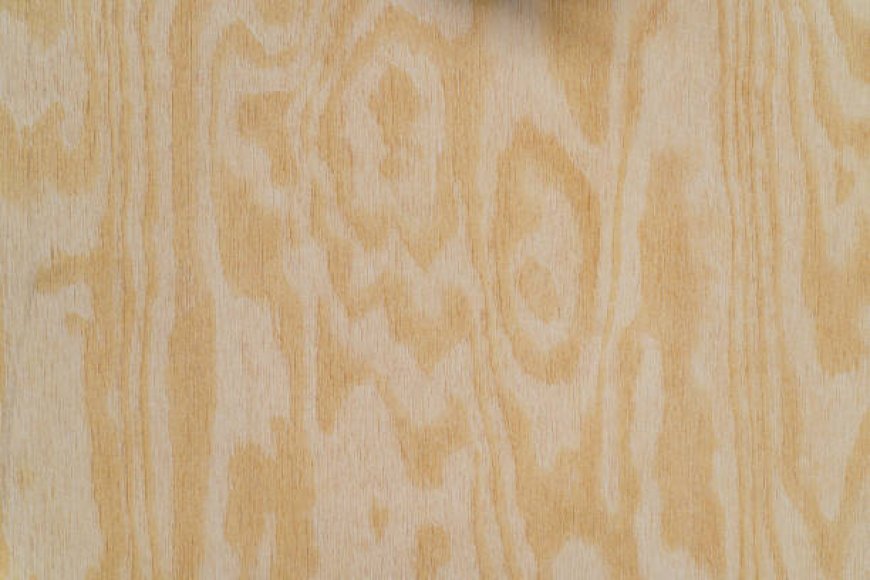Innovations And Advancements In The Field Of Zero-Emission Plywood

Plywood is a widely used material in the construction industry for its strength, durability, and versatility. However, traditional plywood production has a significant environmental impact due to the high emissions of volatile organic compounds (VOCs) that result from adhesives and chemicals. These emissions contribute to air pollution and have adverse health effects on workers and nearby communities. As the demand for sustainable and eco-friendly building materials increases, the industry is turning towards zero-emission alternatives, including zero-emission plywood.
Zero-emission plywood is produced using manufacturing processes that eliminate or significantly reduce VOC emissions, making it an ideal choice for green building projects. The production of zero-emission plywood reduces the construction industry's carbon footprint and provides a healthier and safer working environment for workers. As a result, there is a growing need for zero-emission plywood in the industry, and innovative technologies are emerging to meet this demand.
Current Challenges In Producing Zero-Emission Plywood
One of the biggest challenges in producing zero emission plywood is finding suitable raw materials that meet sustainability criteria. Traditional plywood production relies on hardwood trees that take years to grow, leading to deforestation and habitat destruction. To sustainably produce zero-emission plywood, manufacturers must use alternative, fast-growing raw materials such as bamboo, a highly renewable resource. Another challenge is developing manufacturing processes that eliminate or significantly reduce VOC emissions while maintaining the strength and durability of the plywood. Traditional plywood production relies on adhesives containing formaldehyde, a known carcinogen.
To produce zero-emission plywood, manufacturers must use formaldehyde-free adhesives or adhesives emitting low VOC levels. Finally, the cost of producing zero-emission plywood is still higher than traditional plywood due to sustainable raw materials and innovative technologies. Manufacturers must find ways to reduce the cost to make it more accessible to the construction industry. As a result, the adoption of zero-emission plywood has been relatively slow.
Innovations In Zero-Emission Plywood Production
Innovative technologies are emerging to address the challenges of sustainably producing zero-emission plywood. One such technology is the use of nanocellulose, a material that is derived from wood pulp and is highly renewable. Nanocellulose has high tensile strength and can be used as a reinforcing agent in plywood, reducing the need for adhesives. Another innovation is using bio-based adhesives made from plant-based materials such as soy and corn. These adhesives emit low VOC levels and do not contain formaldehyde, making them an ideal choice for zero-emission plywood production.
Finally, manufacturers are exploring new manufacturing methods that minimize waste and reduce energy consumption. One such method is the use of computer-controlled cutting, which allows for precise cuts and reduces the amount of material waste. Another method is using heat and pressure to bond the layers of plywood, eliminating the need for adhesives.
Advancements In Technology For Zero-Emission Plywood
Advancements in technology are making it possible to produce zero-emission plywood that is sustainable, eco-friendly, aesthetically pleasing, and durable. One such advancement is the use of digital printing technology, which allows for the customization of the plywood's surface with various colours, patterns, and textures. Another advancement is using cross-laminated timber (CLT), a material made by layering and bonding several layers of wood. CLT has excellent structural properties and can be used instead of traditional plywood in many applications, including flooring and roofing.
Finally, advancements in nanotechnology are making it possible to develop stronger and more durable plywood resistant to water, fire, and pests. These advancements are critical for the construction industry, which requires materials that can withstand harsh environmental conditions and last for many years.
Benefits Of Using Zero-Emission Plywood
The benefits of using zero-emission plywood in the construction industry are numerous. First and foremost, zero-emission plywood reduces the industry's carbon footprint by eliminating or significantly reducing VOC emissions. This makes it an ideal choice for green building projects and helps mitigate construction's impact on the environment.
Secondly, zero-emission plywood provides workers a healthier and safer working environment by reducing exposure to harmful chemicals and carcinogens. This is particularly important for workers who are involved in the production of plywood and who are at risk of developing respiratory illnesses and other health problems. Finally, zero-emission plywood is a highly versatile and durable material that can be used in a wide range of applications, including flooring, roofing, walls, and furniture. Its strength and durability make it an ideal choice for structural applications, while its aesthetic properties make it an attractive option for designers and architects.
Future Market Trends For Zero-Emission Plywood
The market for zero-emission plywood is expected to grow significantly in the coming years, driven by the increasing demand for sustainable and eco-friendly building materials. The growth of the market will be supported by advancements in technology and manufacturing processes, which will make eco friendly plywood more affordable and accessible to the construction industry.
One of the key trends in the market will be the adoption of CLT, which has excellent structural properties and can replace traditional plywood in many applications. Another trend will be the development of new sustainable raw materials, such as nanocellulose and other bio-based materials, that can be used in the production of zero-emission plywood. Finally, the market will see an increase in the customization of zero-emission plywood, driven by digital printing technology and other advancements. This will allow designers and architects to create unique, visually appealing structures that are also sustainable, and eco-friendly structures.
The Impact Of Zero-Emission Plywood On The Environment
The impact of zero-emission plywood on the environment is significant, as it reduces the construction industry's carbon footprint and mitigates the impact of construction on the environment. By eliminating or significantly reducing VOC emissions, zero-emission plywood helps to improve air quality and reduce the risk of respiratory illnesses and other health problems.
Furthermore, using sustainable raw materials such as bamboo and plantation-grown hardwoods reduces the impact of plywood production on natural habitats and helps promote biodiversity. This is particularly important in regions where deforestation is a significant problem and where wildlife is at risk of extinction. Finally, zero-emission plywood's durability and longevity help reduce waste and minimize the need for frequent replacements. This helps to conserve natural resources and reduce the environmental impact of the construction industry.
Conclusion And Future Prospects Of Zero-Emission Plywood
In conclusion, the innovations and advancements in the field of zero-emission plywood are shaping the future of sustainable and eco-friendly building materials. Plywood manufacturers in Kerala are playing a key role in driving this transformation by adopting sustainable practices and producing high-quality zero-emission plywood. Adopting such materials is critical for the construction industry to reduce its carbon footprint and mitigate the impact of construction on the environment.
While there are still challenges to overcome, such as sourcing sustainable raw materials and reducing production costs, the market for zero-emission plywood is expected to grow significantly in the coming years. The future is bright for zero-emission plywood, driven by advancements in technology and manufacturing that make it more accessible, affordable, and aesthetically pleasing.
What's Your Reaction?





























